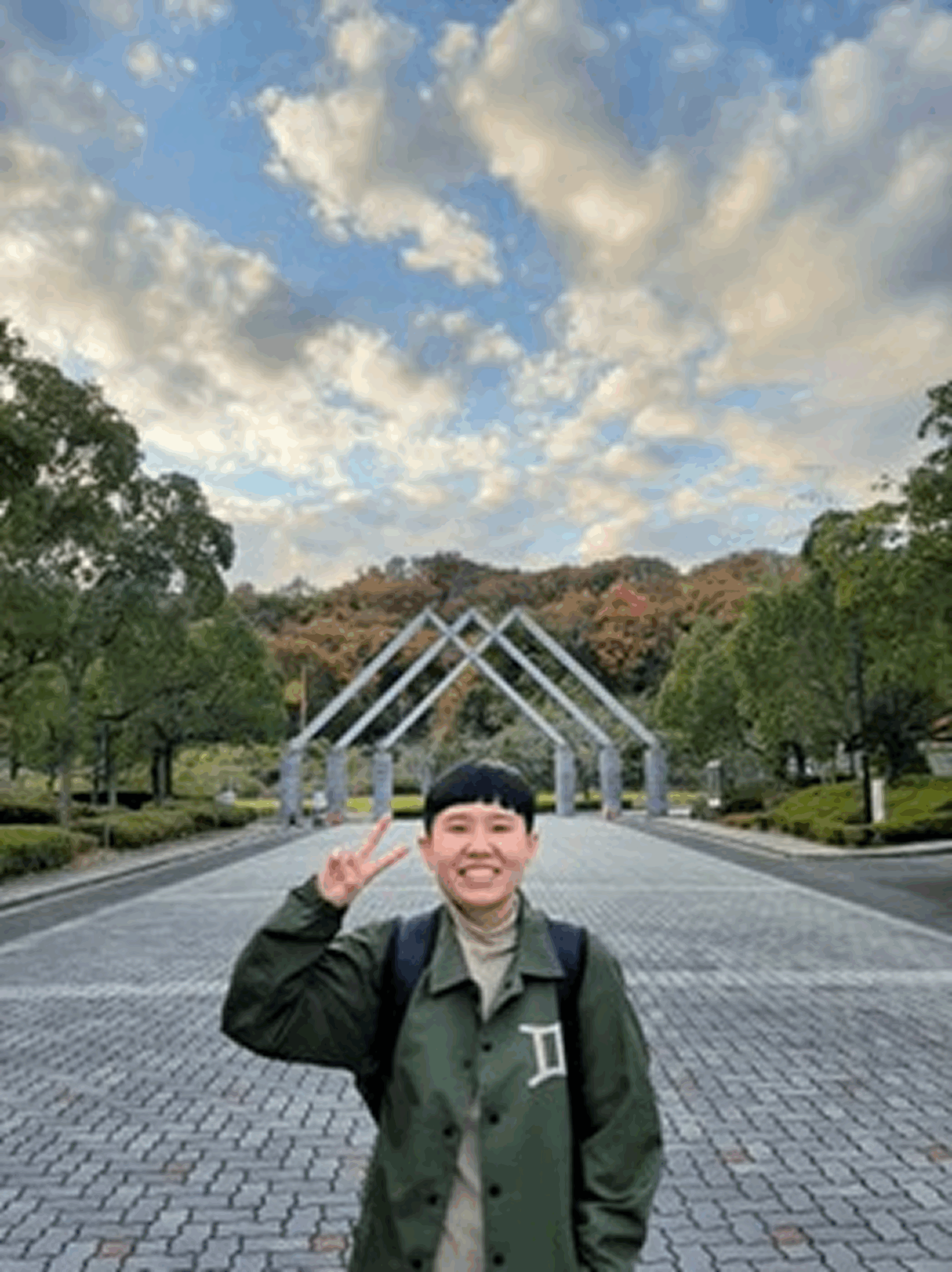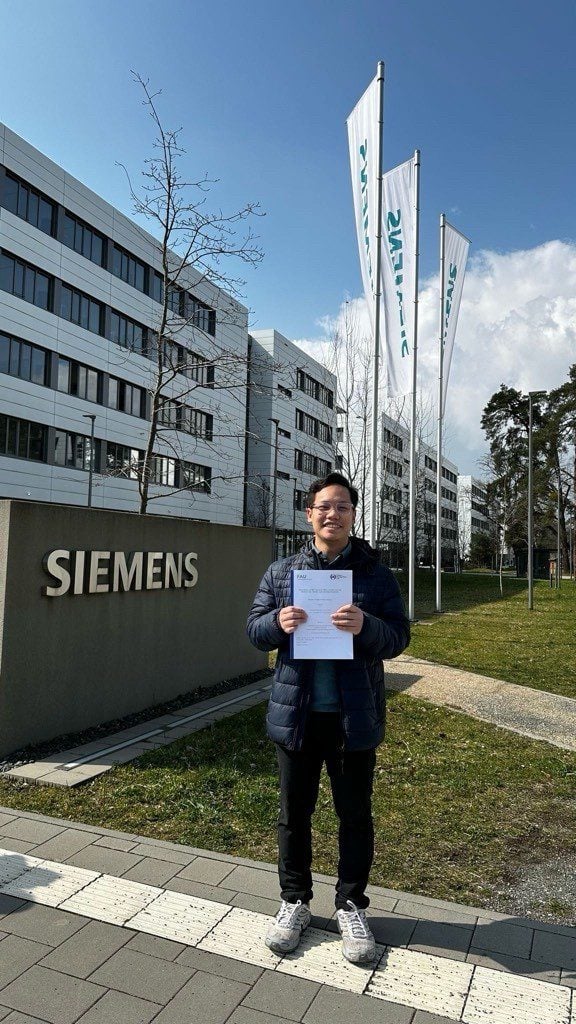Turning Dreams into Degree: How I Turned My Biomedical Background into a PhD Opportunity at NAIST — Fully Funded by MEXT Scholarship
University: Nara Institute of Science and Technology (NAIST)
Degree: Doctor of Science and Engineering
Previous Education: Master of Biomedical Science, Universitas Indonesia
Scholarship: MEXT Scholarship–Fully Funded
Social Media
LinkedIn: linkedin.com/in/cynthiagozali

The Journey
Hello! A warm greeting from Indonesia — my name is Cynthia Gozali, and I’m honored to share that I have been awarded the fully funded MEXT Scholarship through the University Recommendation Program. This Fall 2025, I will begin my doctoral journey at the Nara Institute of Science and Technology (NAIST).
My research path has led me to the fascinating world of Functional Supramolecular Chemistry, where molecules interact through non-covalent forces to form complex, functional structures. This discipline closely aligns with my Master’s thesis and fuels my passion for drug design and molecular self-assembly. The opportunity to explore how structure defines function at the molecular level has inspired me to delve deeper, both to strengthen my scientific foundation and to gain practical, cutting-edge skills as a researcher.
Choosing Japan is more than an academic decision; it's a leap into a country known for its innovative, collaborative, and world-class research environment. I’m incredibly grateful for this once-in-a-lifetime opportunity and excited for the journey ahead—to learn, to grow, and hopefully, to contribute something meaningful to the world of science.
MEXT Scholarship Details
The MEXT Scholarship is a Japanese Government program that offers financial support to international students in various categories, including Research, Undergraduate, and Teacher Training.
I applied through the University Recommendation Program, where my university in Indonesia recommended me to the Nara Institute of Science and Technology (NAIST). After passing NAIST’s internal screening, I was nominated by MEXT for final approval.
As a doctoral student, I receive a monthly stipend of ¥145,000, which includes a living allowance for studying in a major city.
For full details on the scholarship and how to apply, you can visit the official MEXT website.
Educational Background
I earned my Bachelor’s degree in Biology from Universitas Sumatera Utara, graduating with a GPA of 3.60/4.00. My undergraduate research was centered on enzyme purification and molecular microbiology, which I completed on an accelerated timeline—despite the unprecedented challenges of the COVID-19 pandemic.
Driven by a deeper interest in infectious diseases and molecular research, I pursued a Master’s degree in Biomedical Science at Universitas Indonesia, graduating with a GPA of 3.67/4.00. During this time, I focused on microbiology, bioinformatics, and drug discovery, with a particular emphasis on Mycobacterium tuberculosis.
I successfully completed the program within two years, all while working as a research assistant in the laboratory. Balancing intensive coursework and hands-on research in the post-pandemic landscape was demanding, but it strengthened my adaptability, resilience, and commitment to advancing biomedical science.
How Did I Prepare to Apply to The University?
My preparation for the MEXT scholarship journey began around August 2023, shortly after graduating. While also actively pursuing job opportunities, I eventually secured a role in the R&D team of an IVD manufacturing company. After gaining a year of professional experience, I revisited my goal of pursuing a doctoral degree and started preparing more seriously in August 2024.
At the time, resources and information about applying to doctoral programs abroad were limited, and my confidence was wavering. Fortunately, one of my supervisors encouraged me to contact a professor in Japan whose work aligned closely with my interests in drug discovery and molecular microbiology.
Taking that advice to heart, I reached out to the professor by email and, to my surprise, received a prompt response inviting me to join a pre-screening and internship program. This program allowed me to rotate through three different laboratories, spending three days in each. It was a valuable opportunity to engage in in-depth discussions with the faculty and better understand their ongoing and upcoming research. Additionally, the interview session conducted during the internship became an important step in the selection process. This experience helped me find the most suitable lab to pursue my research goals.
The application process that followed was detailed and lengthy. I officially submitted my application to the graduate school in December 2024, which involved preparing and sending documents both via email and the university's portal. Since each university has its own set of requirements, I highly recommend checking the official websites for the most accurate and up-to-date information.
By January 2025, I received my Letter of Acceptance (LoA) from NAIST, confirming that I had been selected as a MEXT scholarship nominee, pending final approval by the Japanese Government. The official results were announced in early July 2025, and I am set to begin my doctoral studies in October 2025.
How Did I Prepare to Apply for the MEXT Scholarship?
Here are some essential insights to help you prepare for the MEXT Scholarship journey. I personally gathered all the necessary information by meticulously reviewing official university websites—particularly the sections dedicated to MEXT, graduate schools, and academic departments. Paying close attention to every detail is crucial; overlooking something small could mean missing out on a big opportunity.
The next major step was identifying a research laboratory that matched both my academic background and future goals. This part is both exciting and challenging. It requires a deep dive into the professor's research interests, recent publications, and how well your plans align with theirs. Reaching out via email can feel intimidating, and even with a strong academic profile, rejection—or no response at all—is a common outcome. But persistence and preparation matter.
To stay organized, I created a document checklist and a detailed timeline with key deadlines. I also dedicated 3–4 months to IELTS preparation, combining self-study with private tutoring. Fortunately, the English requirements for Japan are relatively moderate— an IELTS score of 5.5 or a CEFR B2 level is generally sufficient.
Two months before the deadline, I began assembling the required documents: recommendation letters from my Dean, a compelling research proposal, application forms, and more. Throughout the process, I actively sought feedback from previous MEXT scholars, mentors, and supportive peers to refine my documents and strategy.
If you’re planning to apply to the Division of Material Science, NAIST, you should also be ready for the Graduate School Pre-Screening process. This involves an internship, a research presentation, and fundamental knowledge assessments in biochemistry, bioinformatics, and physics. Beyond academics, mental resilience is key—the full process from start to finish can take up to a year. Patience, dedication, and a clear purpose will carry you through.
What Do You Think Made Your Application Stand Out?
Pursuing the MEXT Scholarship is a journey that begins with careful preparation and a clear sense of purpose. To apply, you’ll need to gather several important documents: the Application Form, Statement of Purpose, Certificate of Graduation, Academic Transcripts, English Proficiency Certificate, two Letters of Recommendation, a copy of your passport, and your thesis abstract.
Beyond paperwork, what truly sets your application apart are your vision and motivation. Among all documents, the Statement of Purpose and Recommendation Letters carry exceptional weight. These aren’t just formalities—they are your opportunity to showcase who you are: your academic journey, your ambitions, and the trust your mentors place in you. They reflect your readiness to grow and contribute to a global academic community.
One often overlooked advantage is the institutional connection (MoU) between your home university and the Japanese university. If there's an established MoU or academic partnership, it demonstrates mutual trust and strengthens your candidacy, especially for the University Recommendation track.
Your Statement of Purpose is your personal manifesto. It should tell a compelling story: why Japan? Why this university and lab? What do you hope to discover, and how will you make a difference? When you align your research goals with a bigger mission, you not only become a strong applicant—you become a scholar with purpose.
This scholarship is more than funding—it's a gateway to growth, discovery, and impact. Let your application reflect the passion that brought you here and the future you're determined to create.
How Was Your Internship Experience at Nara Institute of Science and Technology?
As outlined in the program guidelines, both the internship and the international doctoral program are fully conducted in English. However, learning Japanese alongside your studies is highly encouraged! There are moments when Japanese is naturally used in conversations among students or professors, and picking up the meaning through context can really enrich your experience and help with integration.
So far, I’ve been genuinely impressed with the internship program. Everything is thoughtfully arranged, so there’s no need to worry about logistics, and a stipend is even provided during the on-site session. The staff and fellow researchers are incredibly kind, supportive, and always ready to help.
I feel truly grateful to be surrounded by such an inspiring academic environment. The professors (Sensei), colleagues, juniors, and seniors are not only approachable, but deeply knowledgeable. I’m especially in awe of the professors’ dedication—they’re consistently at the forefront of their fields, both in research and in securing competitive grants. Their attention to detail and drive for innovation are truly admirable.
We’re also strongly supported by the graduate school, from access to cutting-edge research tools to comprehensive health services. With such a well-equipped and collaborative environment, I feel there are no limits to what we can explore and achieve in the lab.
What Would You Have Done Differently If You Were Going Through The Process Again?
If I could turn back time, I would have paid much closer attention to every detail of the entrance examination process. I initially assumed it would be a simple interview, just a discussion about motivation, research interests, and plans, as is common with many other scholarships. But I was completely unprepared for what came next.
Instead of a casual conversation, I was asked to present my computational work, something I had only just begun learning at the time. On top of that, I faced a series of fundamental questions, live, on the spot. It was intense, unexpected, and honestly, overwhelming.
Looking back, this experience taught me a powerful lesson: never assume, prepare. For future applicants, my message is this: double-check every piece of information, be ready, not just on the surface—but with a solid grasp of the basics, and most importantly, ask questions when things seem unclear.
Dig deeper, prepare smarter, and stay proactive. These small steps could save you from big surprises—and turn a moment of panic into a moment of pride.
What Advice Would You Give Those Looking to Apply For A Similar Scholarship?
Start early and be intentional. Take the time to understand the scholarship requirements and the research environment of the university you're aiming for. Don’t just apply, apply with purpose. Find a lab and professor whose work genuinely excites you, and craft your application around that connection.
Prepare a strong Statement of Purpose that clearly outlines your background, motivation, and future goals. Seek feedback from mentors or previous awardees. A well-written research plan and recommendation letters can make a significant difference.
Also, don't underestimate the importance of preparation for interviews or prescreening, know the fundamentals of your field, and be ready to communicate your research clearly and confidently.
Lastly, stay resilient. The process can be long and sometimes uncertain, but keep learning, stay organized, and trust your path. Scholarships like MEXT are not just about grades—they're about passion, persistence, and potential.
Want to submit your
scholarship journey?
Submit Your Story Here!
More Scholarship Recipients

Good day, fellas! Talitha from Indonesia here! I began my career as a Communication Specialist at a government institution i .... Read more

My name is Tafan Kamal Karim, and I am from the Kurdistan Region of Iraq. I have always had a passion for literature and cre .... Read more

Hi! My name is Shafiq from Malaysia. So, my education journey in Germany starts I received a full scholarship from Yayasan T .... Read more

Leave A Comment